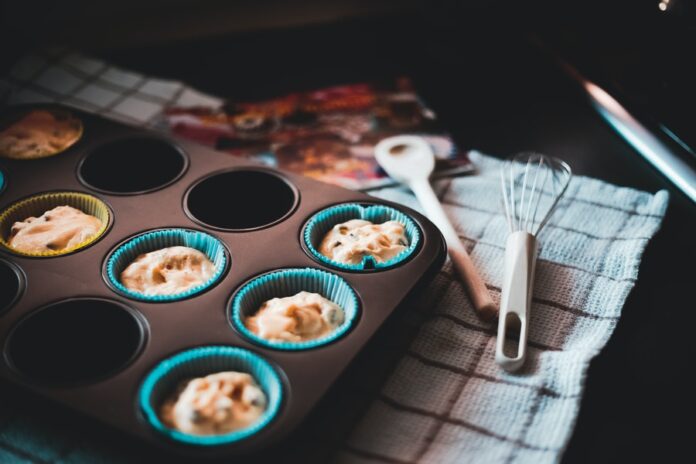Have you spent years attempting to master a dish that should be simple, only to have it fall flat time and time again? With pizza dough, sweet potato fries, and other culinary essentials, this appears to be the case for many amateur cooks. But we all know there’s no going back once you figure out that go-to hack.
It’s not difficult to master the art of baking cookies and cakes if you stick to a simple recipe. If you’re seeking time-saving tricks, baking shortcuts, or dessert hacks, we’ve got some terrific suggestions for you to try right now. Take a look at these simple baking tips and tricks before you start your next wonderful endeavor, including how to cut and soften butter, how to keep brown sugar fresh, and how to make your favorite cake moist.
Use The Correct Butter Consistency
Because butter is the foundation for so many baked items, it’s critical to prepare it according to the recipe’s instructions. The texture of baked items is greatly influenced by the temperature of the butter. Butter is often used in baking recipes in three different forms: softened, cold (or frozen, as in scones), and melted.
Most butter recipes ask for room temperature or softened butter. Butter at room temperature is chilly to the touch, not warm. Your finger will make an impression when you press it. Your finger will neither sink into the butter nor will it slide all over the place. Allow butter to sit on the counter for 1 hour before starting your recipe to achieve the correct consistency and temperature.
Read The Recipe Before Beginning
Reading over the ingredients and instructions from beginning to end before getting your hands and pans dirty is one of the most basic criteria for correctly performing any recipe. Marinades and simmers can take hours, and sweets and doughs frequently require overnight chilling.
Recipes don’t just do it for fun; room temperature ingredients emulsify much more easily into the batter, resulting in a more consistent texture throughout your baking dish. Consider the texture of the recommended butter. Cold butter cannot be creamed into the soft consistency required for several recipes.
Prep Your Ingredients Prior
Before you begin a recipe, measure your ingredients. After reading through the ingredients, prepare them on your counter. When you start recipes this way, there’s very little opportunity for error; you’re not fumbling and hurrying through the procedure.
Don’t make any modifications to the ingredients. Baking is all about chemistry. Make the recipe exactly as written initially, then make substitutions as needed if you’re confident. Before setting everything up on the kitchen table ensure that the surfaces are thoroughly cleaned.
Measure Your Ingredients
This is one of the most crucial baking suggestions on this page. Baking, as you may know, is a science. Excellent baking necessitates exact proportions, tried-and-true procedures, and tried-and-true recipes. Unlike cooking, you can’t just throw a bunch of ingredients together, make a mess, and eat it regardless.
Dry ingredients should be measured with measuring cups or spoons that are specifically designed for dry substances. Dry ingredients should be spooned and leveled (also known as “spoon and sweep”). This implies you should fill the cup with a spoon and level it off. This is especially true when dealing with flour. Scooping flour into glass bowls or jars (or any other dry ingredient) compacts the ingredient, leaving you with up to 150 percent more than you need. A recipe that calls for 1 cup of flour but is baked with 2 or more cups will almost certainly fail.
Check Temperatures
Use an oven thermometer to check the temperature. Put it in the middle of the oven. Some can be hung from the racks or placed directly on the oven’s bottom. They’re inexpensive, but in a baker’s kitchen, they’re indispensable. Place it in your oven to keep track of the temperature. Before switching on your oven check your cable connection to ensure that the electrical circuit breaker in the distributor box is functioning to avoid any electric trips.
Unless you have a brand new or frequently calibrated oven, the temperature in your oven is likely to be off. It’s possible that when you set your oven to 350°F, it’s not 350°F inside. It could be inaccurate by a small amount – 10 degrees – or by a large amount – 100 degrees! What will it mean for your cookies, cinnamon buns, and cakes? While this may not appear to be a major issue to you, it is a major issue for bakers.
Chill Your Cookie Dough
Refrigerating cookie dough helps to stiffen it up and prevents it from spreading too much. Chilling cookie dough produces a thicker, more solid cookie as well as an improved flavor. Furthermore, cooled cookie dough is much easier to work with and shape. Allow the cookie dough to come to room temperature after chilling for about 10 minutes (or longer, depending on how long it has chilled) before rolling into balls and baking. Cookie dough can become too hard to roll/handle after being refrigerated.
Conclusion
It pays to be a perfectionist when it comes to baking. These baking techniques should hopefully help you achieve the recipe success and kitchen confidence you desire.






















